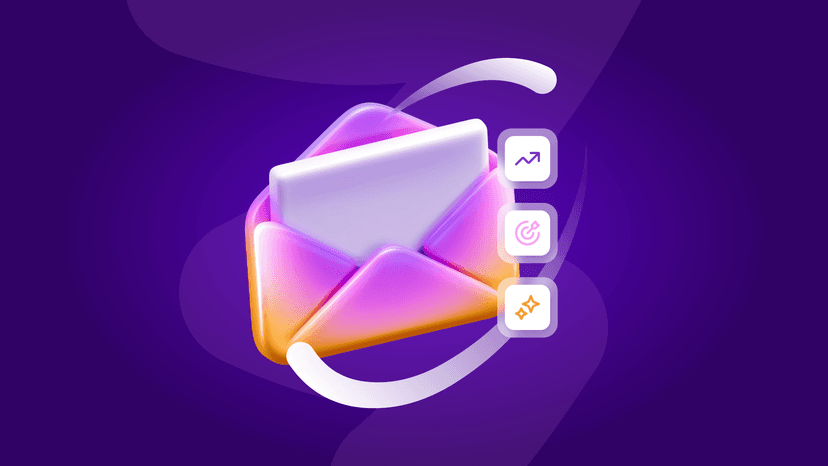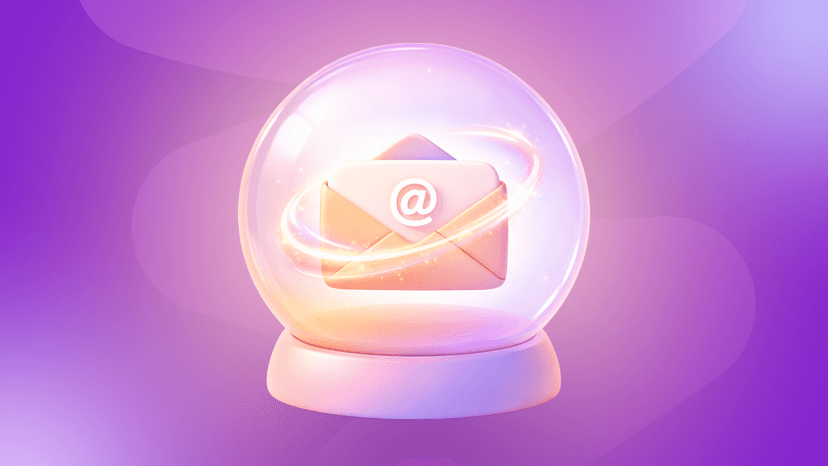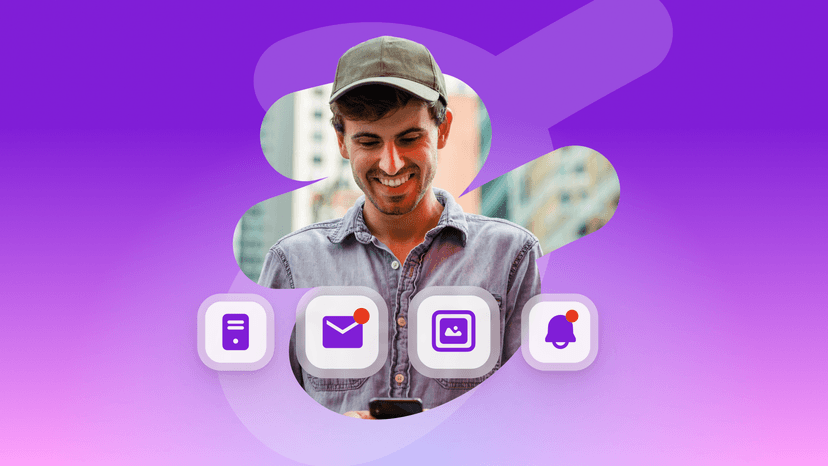How to Incorporate WhatsApp Into Your Cross-Channel Strategy
Published on June 05, 2024/Last edited on June 05, 2024/8 min read
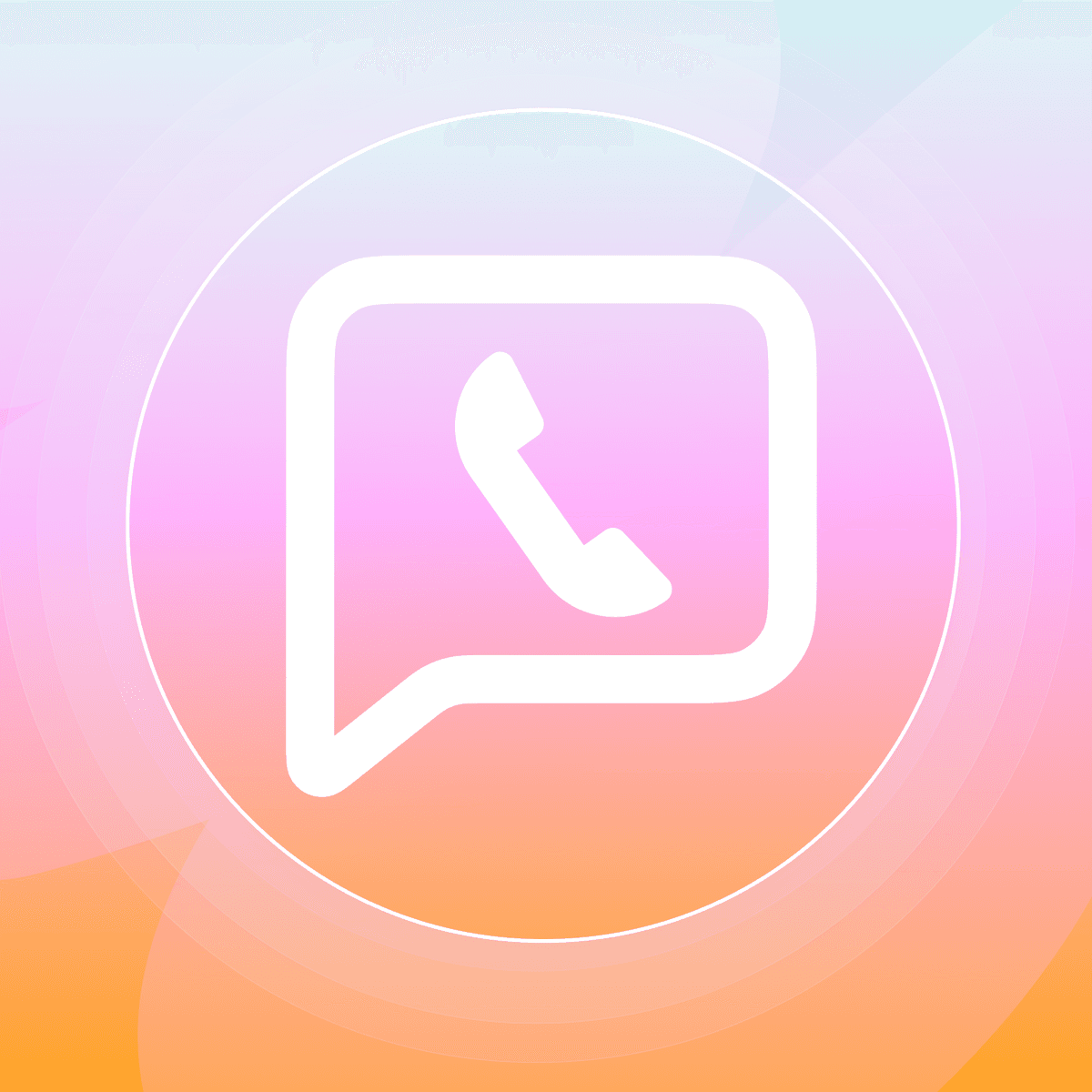

Lexie Haggerty and JoJo Zieff
WhatsApp is quickly becoming an essential channel for marketers around the globe. Last year, it might have been considered the “new kid on the block” when it came to marketing channels. However, in 2024, it’s emerging as a key channel that marketers plan to use alongside its more traditional counterparts like email, mobile, and in-app messaging. In fact, we recently surveyed 1,900 marketing executives and asked about the channels they are using (or plan to use) in 2024. 47% of marketers said they are using or plan to use messaging apps like WhatsApp, LINE, and KakaoTalk this year, the highest rate associated with any channel.
WhatsApp is an obvious addition to a brand’s channel mix with its rich, two-way messaging capabilities and global reach. But as marketers think about launching their first WhatsApp campaigns, one of the main questions that arises is: “How do I effectively incorporate WhatsApp into my cross-strategy strategy?”
In this article, we’ll walk you through why you should add WhatsApp to your channel mix, four common campaigns you should add WhatsApp to, and practical tips for incorporating WhatsApp into your cross-channel strategy in a way that’s both cohesive and customer-centric.
Boost Cross-Channel Campaign Performance with WhatsApp
WhatsApp is a unique channel that allows marketers to send attention-grabbing content and facilitate two-way conversations with their customers. Incorporating WhatsApp into an existing cross-channel campaign can correlate with an increase in engagement, purchases, and retention.
However, this strong performance isn’t limited to adding WhatsApp to a previously single-channel strategy. In the data we analyzed, users who received WhatsApp campaigns also engaged (on average) with messaging across three other channels from a given brand. Despite already engaging with messaging across several other in-product and out-of-product channels, receiving messaging via WhatsApp correlated to an increase in performance.
The impact of WhatsApp messaging on engagement, purchases, and retention (when used alongside other channels)

The average uplift of channel mixes including WhatsApp compared to the respective channel mixes without WhatsApp (e.g. IAM + SMS + WhatsApp vs. IAM + SMS; Email + WhatsApp vs Email)
Four Common Campaigns and How to Incorporate WhatsApp Seamlessly
Adding a new channel to established campaigns and cross-channel journeys can seem like a daunting task. However, there are several different factors that can help lead your strategy.The first step is to pick the campaigns that could benefit most from WhatsApp’s unique capabilities. That means identifying campaigns where:
- Two-way messaging would be beneficial, like onboarding flows or customer feedback campaigns.
- WhatsApp’s rich media could help you show off your products and services or enhance your promotional campaigns, including seasonal promotions, feature releases, and abandoned cart campaigns.
- You need to reach customers outside of your app to communicate time-sensitive or important information, like order status updates and critical account updates.
Let’s walk through four campaigns you’re probably already running and explore how to incorporate WhatsApp into them to boost their performance.
1. Welcome or Onboarding Campaigns
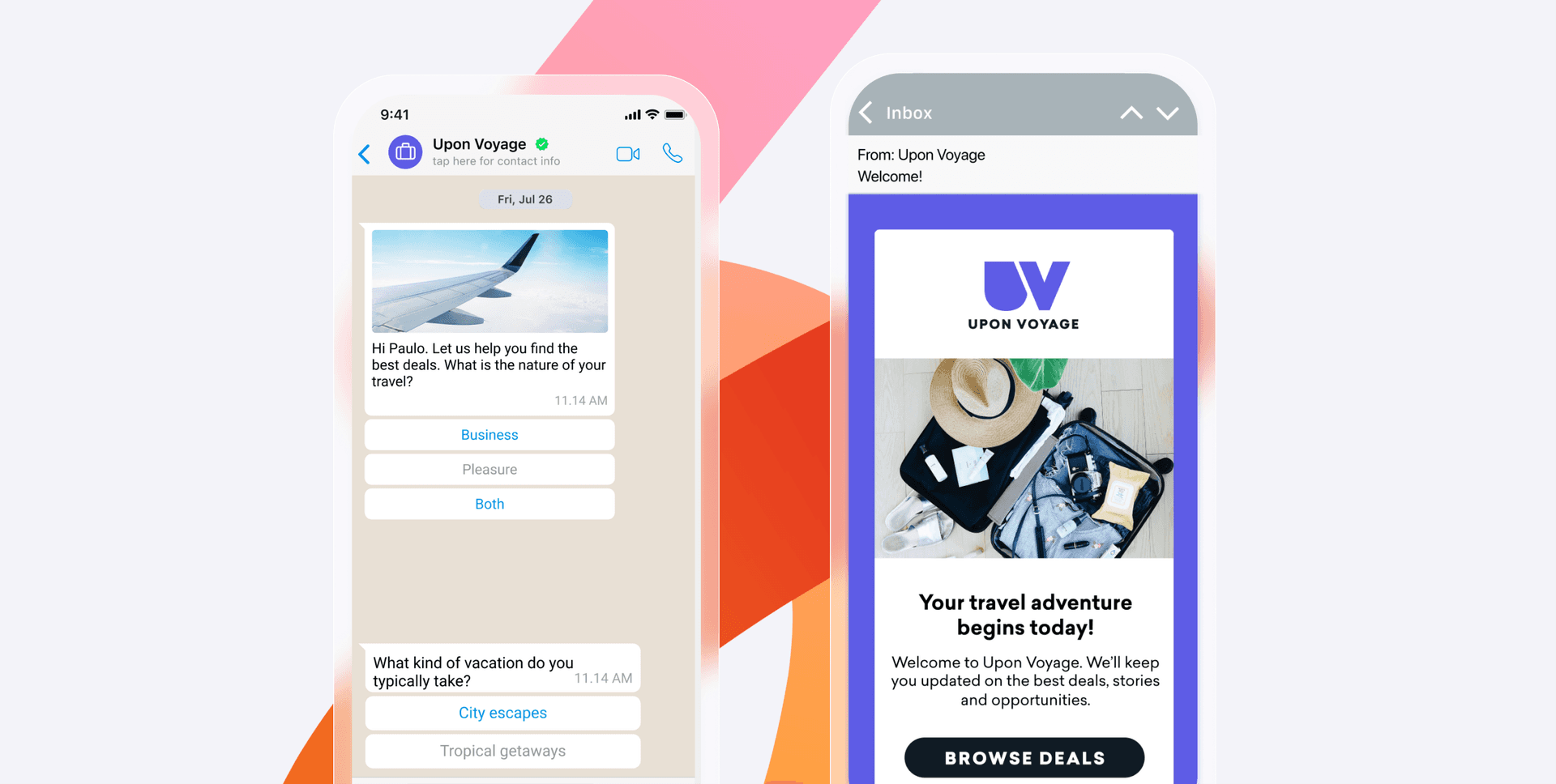
For welcome campaigns that are designed to greet new customers and drive them back to your app or website to complete their first high-value action (HVA), consider sending a follow-up WhatsApp message. We recommend targeting users who don’t open your communications on other channels, like email, first. Welcome campaigns can be an effective way to collect customer data and showcase the value of your offering. Using WhatsApp to support these campaigns can make them even more effective. Use quick replies to collect customer preferences or send a WhatsApp message with a dynamic link to direct customers back to where they left off to complete your in-product onboarding flow. That said, when customers don’t engage with your WhatsApp messages, consider sending follow-up messages on other out-of-product channels, like email or push, that can get them back to your app or website. Pro Tips:
- Leverage a customer engagement platform that offers intuitive journey orchestration to seamlessly coordinate cohesive messaging across multiple channels and trigger personalized campaigns based on your customers’ actions, behaviors, preferences, and past channel interactions.
- With AI-assisted testing and automation, you can easily test different welcome messages on WhatsApp to optimize the cadence and content of your messaging for each customer.
- Use a platform that supports AI to rapidly create copy and adjust the tone of the writing, as well as to QA your messages on WhatsApp and other channels before you share them to your customers.
2. Promotional Campaign
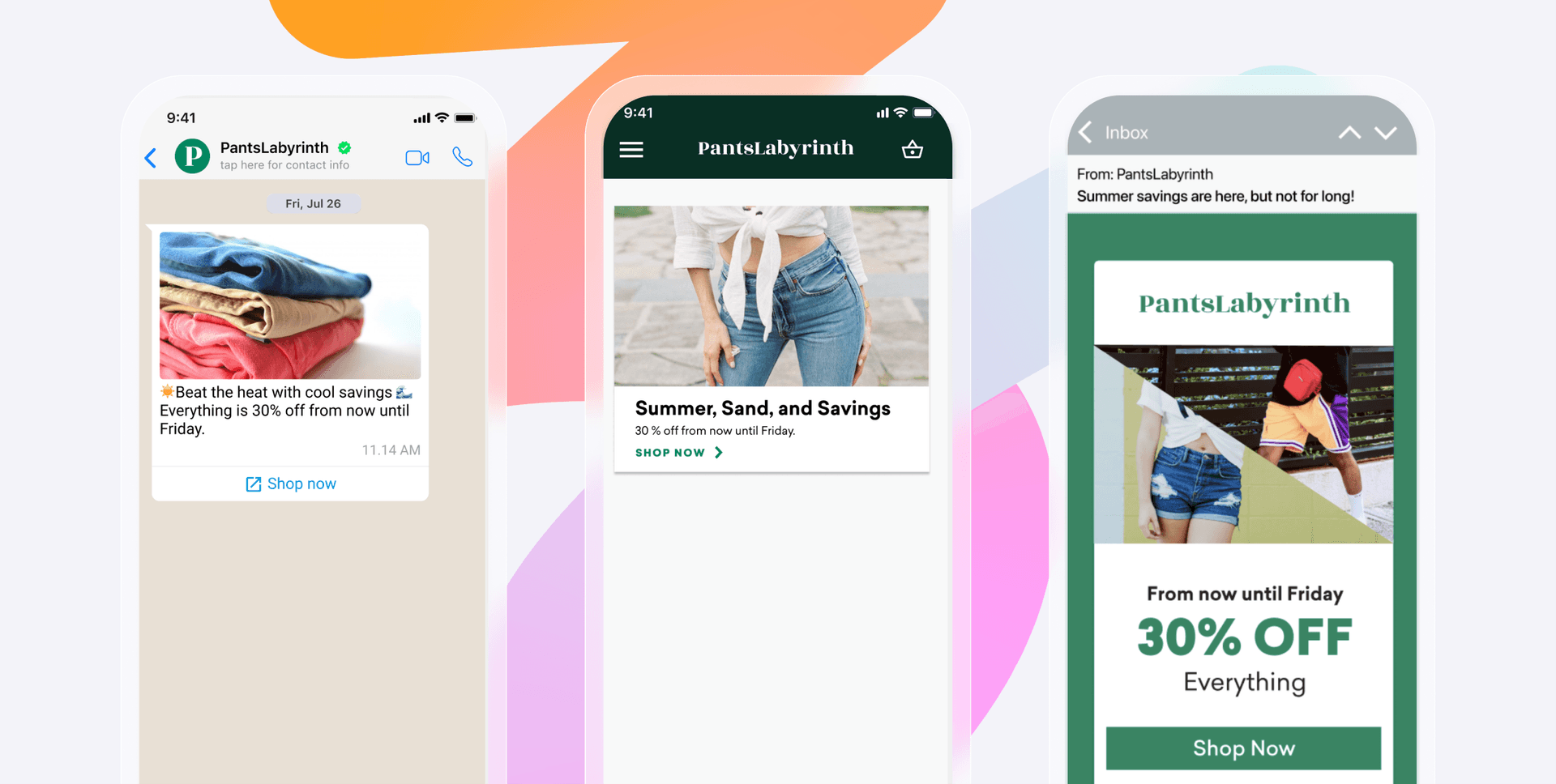
WhatsApp is an ideal channel to show off your products and services because it supports rich, high-resolution images. Elevate your existing seasonal campaigns or new product announcements by adding WhatsApp messages. Because WhatsApp is a premium channel, you may not want to send promotional campaigns to your entire audience via WhatsApp. Consider leveraging flexible segmentation to fine-tune your audience—and, for less engaged customers or larger segments of your audience, try reaching them on other mobile or in-app channels first. For triggered promotional campaigns like back-in-stock or abandoned cart messages, consider setting up the same campaign on multiple out-of-product channels, and reaching customers at the time they are most likely to engage (WhatsApp or push or email, for example) using AI tools like Intelligent Timing.
Pro Tip:
- Use a platform that offers flexible segmentation to build audiences who are most likely to engage with and convert on your WhatsApp messages. This will help you allocate higher send volumes towards lower-cost, conversion-driving channels before sending on more premium channels.
- Leverage AI to showcase the best recommendations for each customer. Seamlessly insert the products or services each customer is most likely to purchase directly in your WhatsApp messages to make purchases easier and more likely.
- Use AI to automatically create and test copy with different tones of voice, such as urgent or playful, and optimize the messages that resonate most with each individual
- Use WhatsApp to add creativity and interactive elements to your promotional campaigns. For example, consider using quick replies to ask customers about their preferences related to a new product announcement or sprinkle in fun quizzes and surveys that relate to your promotions.
3. Triggered and Transactional Campaigns
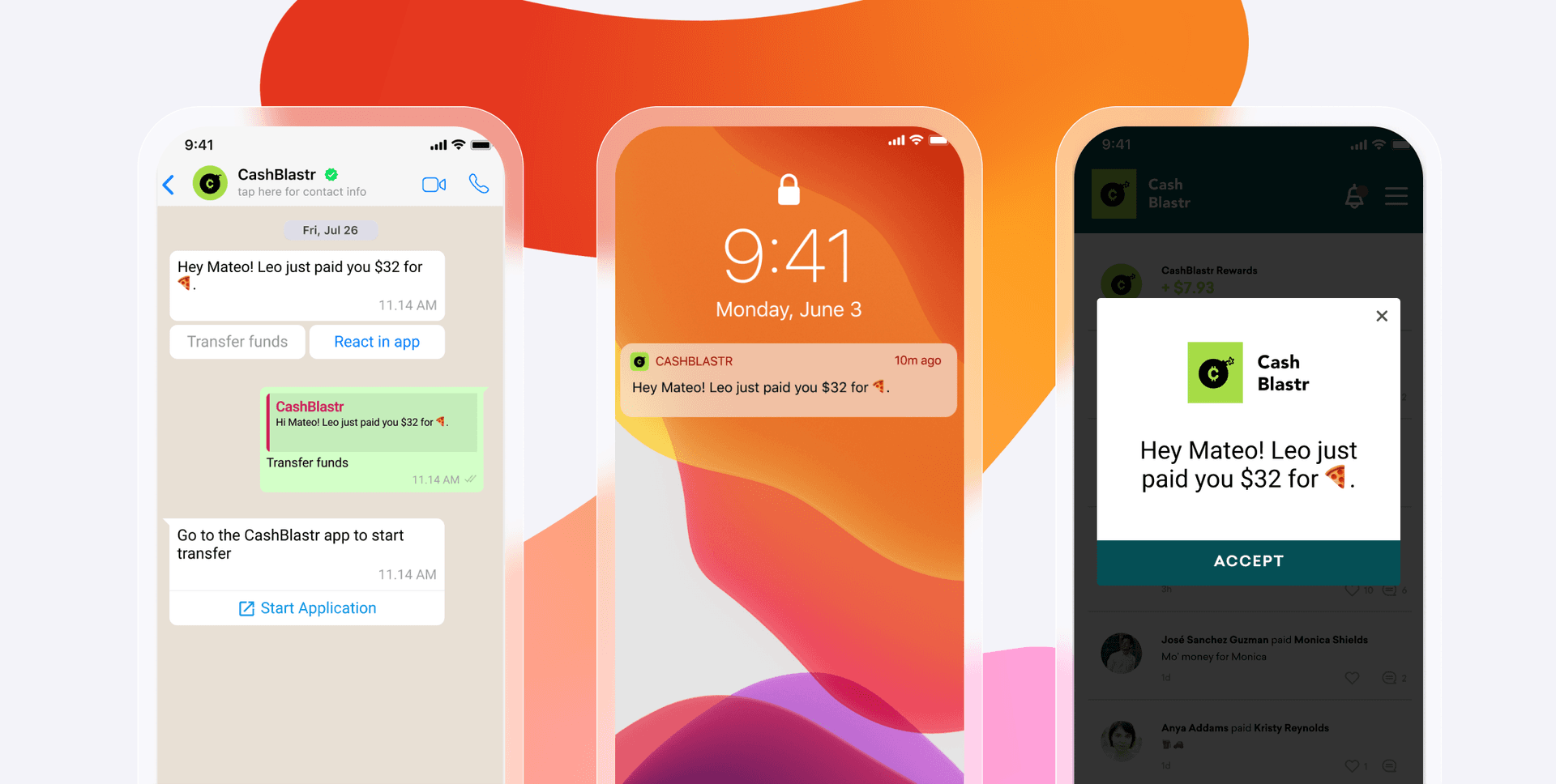
For triggered campaigns, like order status updates and account reminders, it's important to reach your customers on the channel they're most likely to engage with and to deliver your message at the right time. After all, the key objective with these types of campaigns is to keep them informed about important updates, which leads to higher customer satisfaction over time. Many of your customers probably prefer to receive these types of communications on WhatsApp, since it's an intimate channel they use every day to communicate with friends and family. But it's not as simple as transferring all your triggered campaigns to WhatsApp. We recommend setting up these campaigns on all (or most) of your out-of-product channels (e.g. email, push, WhatsApp, SMS), and then sending the communication on each customer’s preferred channel. Pro Tip:
- Leverage a cross-channel platform that uses intelligent personalization to create 1:1 personalized content for each customer.
- Real-time action-based triggers will ensure your messages on WhatsApp and other channels are sent at the moment that they will be most relevant.
- Use a platform that enables you to preview customer journeys before actually launching them, helping inspire confidence that your messaging flows function exactly as intended.
4. Win-back Campaigns
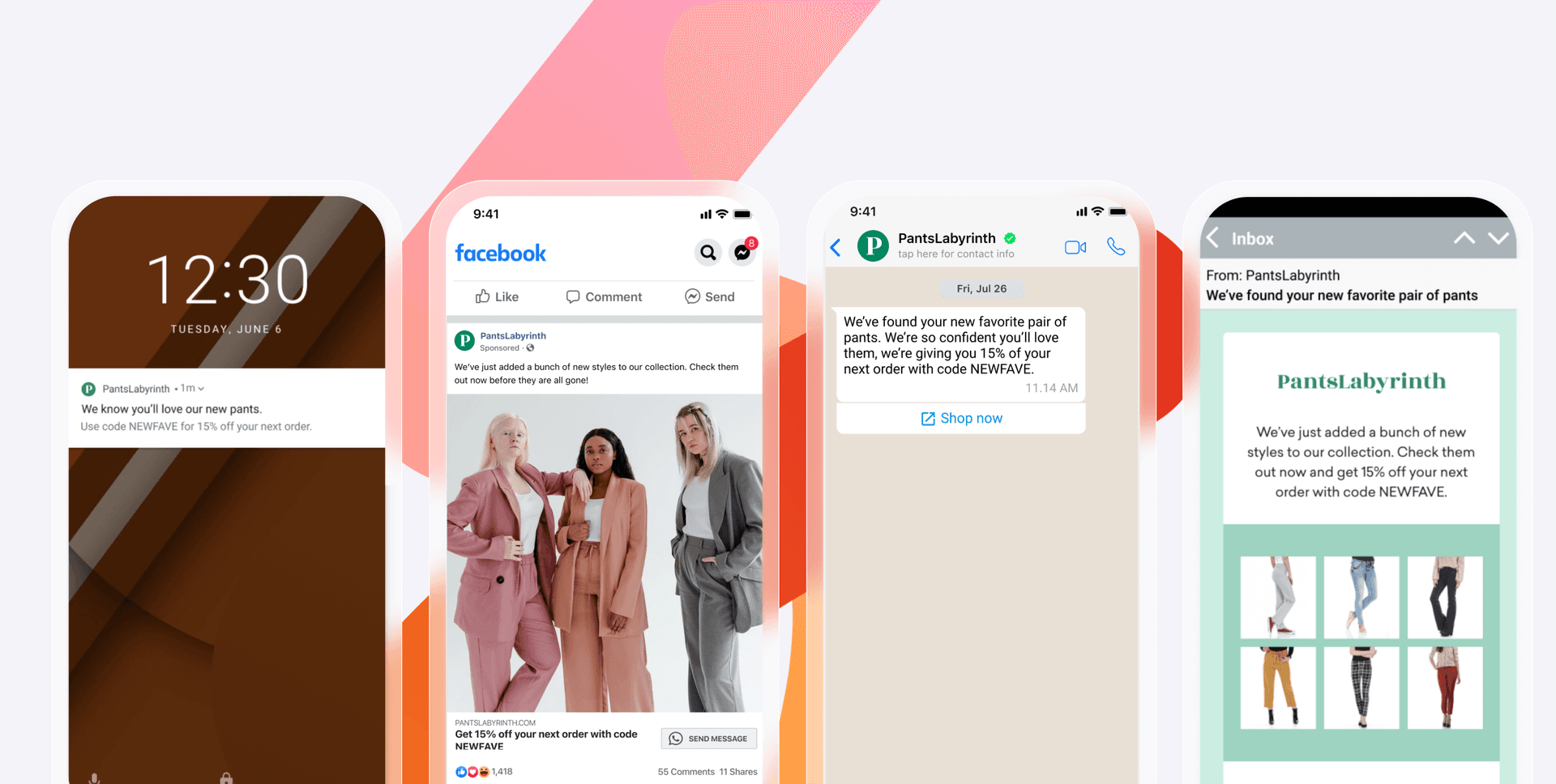
WhatsApp is an ideal addition to your win-back strategy. Why? Because it’s an out-of-product channel with high engagement. That means you’re more likely to catch a lapsed or dormant customer’s attention with a compelling win-back offer or important update that might motivate them to come back. To incorporate WhatsApp into your existing win-back campaigns, we recommend targeting users who have unsubscribed or stopped opening your messages on other channels. For example, try sending WhatsApp campaigns to customers who have turned off push notifications or haven’t opened an email in a certain number of days. If they’re subscribed to WhatsApp messages, chances are that they found some value in opting in at some point in their relationship with your brand.If they do engage with your WhatsApp message, either by reading a message or clicking on a link, be careful not to overwhelm them with additional communications until they’ve become an active user again.
Pro Tip:
- To avoid overwhelming lapsed or dormant users (and more engaged customers alike!) with too many messages, combat message fatigue by implementing frequency capping. This will limit the number of WhatsApp messages they receive from your brand in a given timeframe.
- With predictive AI, you can easily identify and send more targeted WhatsApp messages directly to the customers that have the highest likelihood of churning, support stronger retention and it.
Final Thoughts
Incorporating WhatsApp into your cross-channel marketing strategy can help enhance engagement, increase purchases, and improve customer retention. By leveraging its two-way messaging and rich media capabilities, WhatsApp can be integrated into various campaigns, from onboarding to promotional efforts, effectively reaching customers where they are most attentive.
To discover how you can effectively add WhatsApp to your marketing mix, check out the WhatsApp Inspiration Guide.
Related Tags
Be Absolutely Engaging.™
Sign up for regular updates from Braze.
